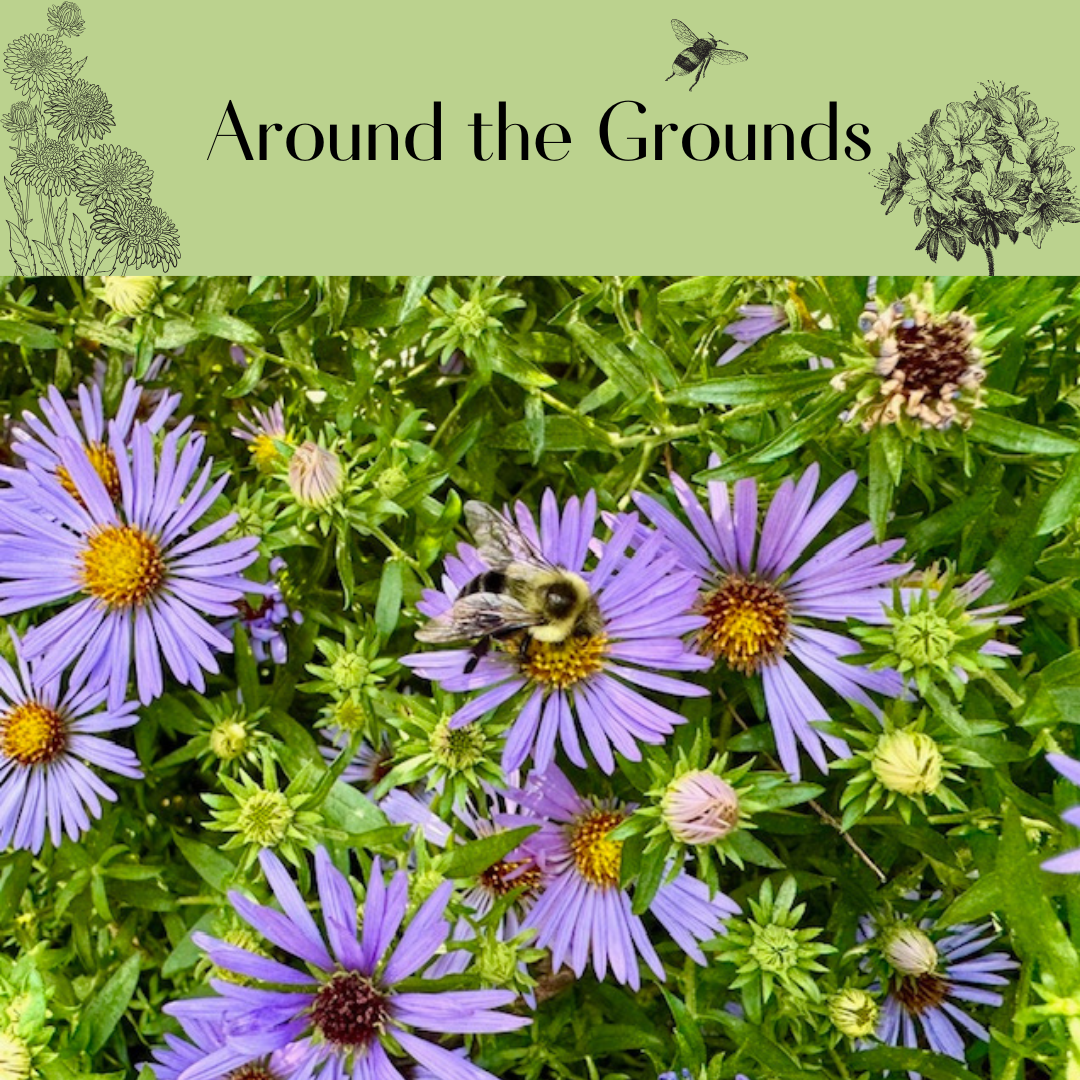Winter is coming…
Despite sunny warm days in October, many of our wildlife friends know that time is short.
So, they are busy stocking up for the long winter ahead. Native bumblebees are storing pollen and nectar to provision their underground nests for hibernation. Migrating butterflies and hummingbirds are hunting for nectar along their routes as they travel to tropical regions. Songbirds are loading up on seeds and berries before continuing on to their winter homes.
At this critical time of year, it is up to us to provide nutritious food that birds, bees, and butterflies need. Suburban yards can, and should, provide the necessary resources.
The good news is that the best plants for supporting wildlife are also the best plants for adding fabulous fall color to your landscape! You can fill your yard with long bloomers, late bloomers, and seed and berry producing plants that will make you a fall hero both to wildlife and to your neighbors!
Long bloomers:
Two of the best fall plants for native bees actually start blooming in early to mid-summer and don’t stop until the first frost: Anise Hyssop (Agastache foeniculum) and Mountain Mint (Pycnanthemum muticum). It’s hard to think of any garden plants that do so much for so long. Both of these native perennials attract a huge variety of pollinators all summer, and both somehow manage to keep producing nectar well into fall. They are garden show-offs and very easy to grow. Perfect for pollinator gardens, both plants do best in full sun, are drought tolerant, and are completely ignored by deer, rabbits, and woodchucks. Now, in mid-October, they are still covered with bumblebees, honey bees, skipper butterflies, and dozens of small pollinators all stocking up for winter. See earlier blog posts for more info on Anise Hyssop here, and on Mountain Mint here.
Late bloomers:
The most iconic native flowers of fall are Goldenrod and Asters. Goldenrod is a keystone plant, meaning many species of insects need it to survive. More than 20 species of native bees, for example, can eat only the pollen of Goldenrod, so they go looking for it to provision their nests.
While some goldenrod species can be too aggressive for suburban gardens, cultivars like Solidago rugosa ‘Fireworks’ and Solidago sphacelata ‘Golden Fleece’ are well-behaved and make beautiful additions to the autumn landscape. For more on Goldenrod, click here.
Asters are also keystone species, and they are pollinator favorites. Unfortunately, many of them are also favorites of deer and rabbits. So, while New York Aster and New England Aster are incredibly valuable in protected areas, if your yard is browsed by deer, White Wood Aster and Aromatic Aster, are the best bets.
White Wood Aster (Eurybia divericata) is native to the forests and shady woodlands of the Northeast, and is a great choice for underplanting trees and shrubs. As one of those rare plants that thrives in dry shade, it is an excellent native substitute for pachysandra, ivy, or vinca. It starts blooming in late September or early October and continues into November with small daisy-like flowers with yellow centers. In a fascinating trick that helps late-season pollinators save energy, the yellow flower centers turn a burgundy color after they are pollinated, so bees know not to waste their time looking for pollen where it’s already been harvested! Growing 2 to 4 feet high, but shorter and fuller in part sun, White Wood Aster seeds itself around freely without becoming a nuisance. Blue Wood Aster (Symphyotrichum cordifolium) is equally beautiful and equally useful in similar garden situations.
Aromatic Aster (Symphyotrichum oblongifolium) is native to much of the Southeastern and Central US, but is hardy in Zones 3-8, well north of its native range. It prefers sunny, dry areas with relatively poor soil, and is a good companion for ornamental grasses. Aromatic Aster forms a bushy clump and looks great massed where its flower impact is really spectacular. Plants grow 2 to 3 feet tall and form a densely-branched, mounded shape with small dark green leaves. It blooms profusely in October, completely covering itself with one-inch purple or lavender flowers loved by late-season native bees and butterflies.
Seed and Berry Producers:
Migrating birds, as well as birds that stay through the winter, need nutrient-rich berries and seeds to build strength for the challenges ahead. The seeds of coneflowers and black-eyed Susans nourish goldfinches.
Research has shown that the fruits of non-native invasive plants such as Korean dogwood, porcelain berry, burning bush, and barberry are less nutritious for North American birds than the fruit of native plants. Invasive berries are low in fat and protein and high in carbohydrates, which reduces their nutritional value. It makes sense that the healthiest plants for native birds are the plants that co-evolved with them.
Photo: Saverio DiGiorgio @Savwildlifephotography
Beginning in late summer, many of our native trees and shrubs produce berries and seeds that birds need. Happily, these plants also produce the best fall show in our landscapes! It is an absolute joy to watch birds harvest seeds and berries as they travel through brilliant fall foliage in suburban yards.
Many native trees and shrubs, including Crabapples, Winterberries, Chokeberries, American Hollies, Hawthorns, and American Dogwoods, supply berries for wildlife and gorgeous fall color for us. These plants are great choices for Northeastern suburban yards.
provide berries and dazzling fall color.
And don’t forget the squirrels! They need to stock up for winter, too. Just watch this happy grey squirrel in an American Dogwood (Cornus florida)!
So, make your yard a grocery store for winter wildlife! It’s not too late for planting trees, shrubs, and hardy perennials. Think about adding a few of these plants now to make your yard a healthy — and colorful — place for butterflies, bees, and birds for many autumns to come.

